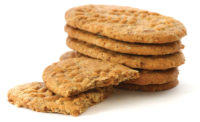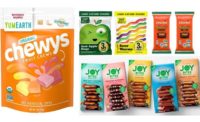
Joe Formanek
In order to learn more about strategies for snacks and baked goods that offer both craveable flavor and better-for-you nutritionals, we reached out to Joe Formanek, director, ingredient innovation, Ajinomoto Health & Nutrition North America, Itasca, IL.
Douglas J. Peckenpaugh: What are some of the top trends in better-for-you snack and bakery product development today?
Joe Formanek: The retail market—either brick and mortar or virtual—is quite strong in better-for-you. This trend should also develop in the foodservice industry with more and more options for healthier products positioned on the menu due to public recognition of the health implications of sugar and salt.
Additionally, we know that the pandemic has led to reduced travel across the world. This has led consumers to seek a sense of adventure through food. This is where kokumi will come into play in 2022—the concept of kokumi is a more-recent development, having been discovered by Ajinomoto Health & Nutrition scientists in the 1980s, but it is another trend beginning to gain traction in food service where the wonderful richness and complexity that kokumi delivers comes into play in savory applications like savory seasonings.
DJP: Why is sodium content an issue in snacks and baked goods?
JF: Sodium intake continues to be at an all-time high in the U.S. As a result, about 90% of Americans consume too much—approximately 1,000 mg over the recommended maximum. Excessive sodium intake can lead to high blood pressure, a major risk factor for heart disease and stroke, which are among the leading causes of death in the U.S. Based on current scientific evidence, reducing sodium intake will help mitigate the risk of these health conditions and help improve general wellness among the U.S. population.
DJP: What strategies do product developers have available to them to reduce sodium in snacks and baked goods without losing flavor impact?
JF: A largely unexplored solution for reducing sodium is the use of glutamates, like monosodium glutamate (MSG). Even though MSG has “sodium” in its name, it has two-thirds less sodium than table salt, and when used in the place of some salt, it can significantly lower the sodium content of a dish or product. MSG also provides umami, a savory taste that makes foods delicious with less sodium.
In fact, previous research corroborates MSG as an effective sodium-reduction tool—it can help reduce sodium by 30%, and in some cases up to 50%, in packaged foods and snacks, without compromising taste. MSG has been maligned for decades for unjustified reasons, while all the scientific evidence backs our claims that it is a safe ingredient.
We’ve also found that a combination of umami and kokumi performs well in certain applications to deliver the sodium taste enhancement that is missing when salt is reduced, as well as other aspects of flavor enhancement that also tend to suffer due to the removal of salt.
Aside from MSG and other ingredient-related solutions, we feel that the high demand for better-for-you snacks and baked goods provides an opportunity for product developers and solution providers to approach the growing consumer need as partners. The abundant expertise across our industry has potential to create a long-term solution for high sodium levels in food products, and we’re committed to being a part of that solution.





